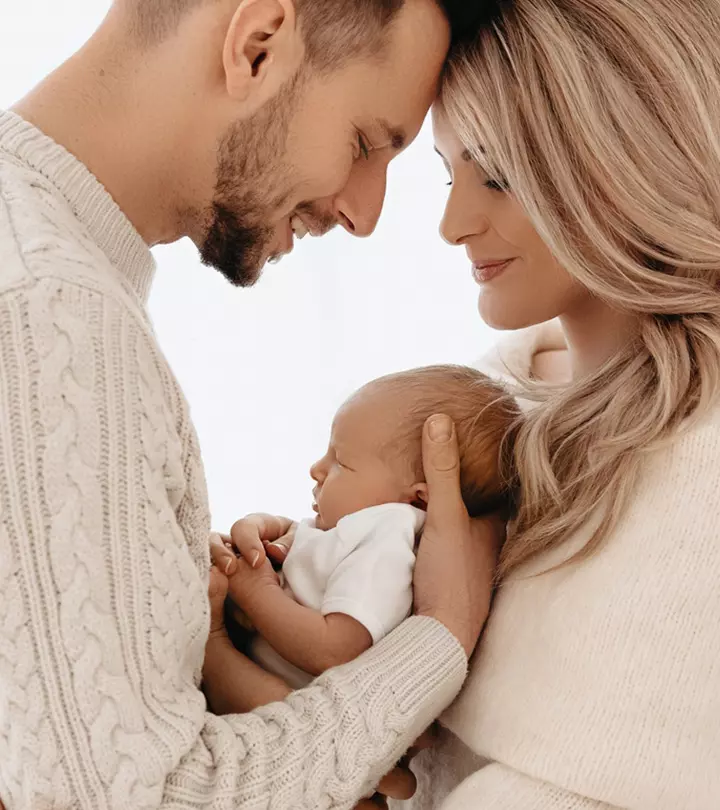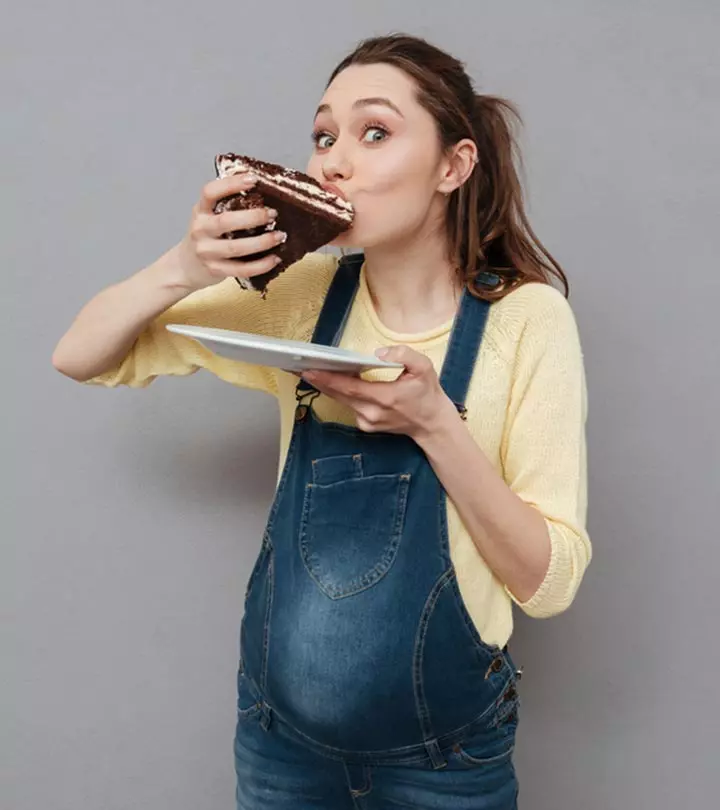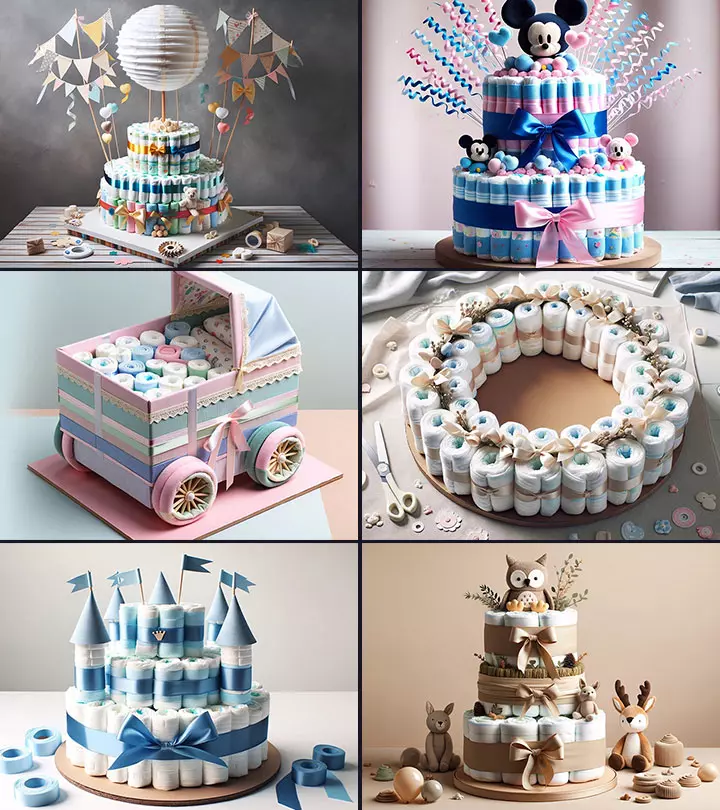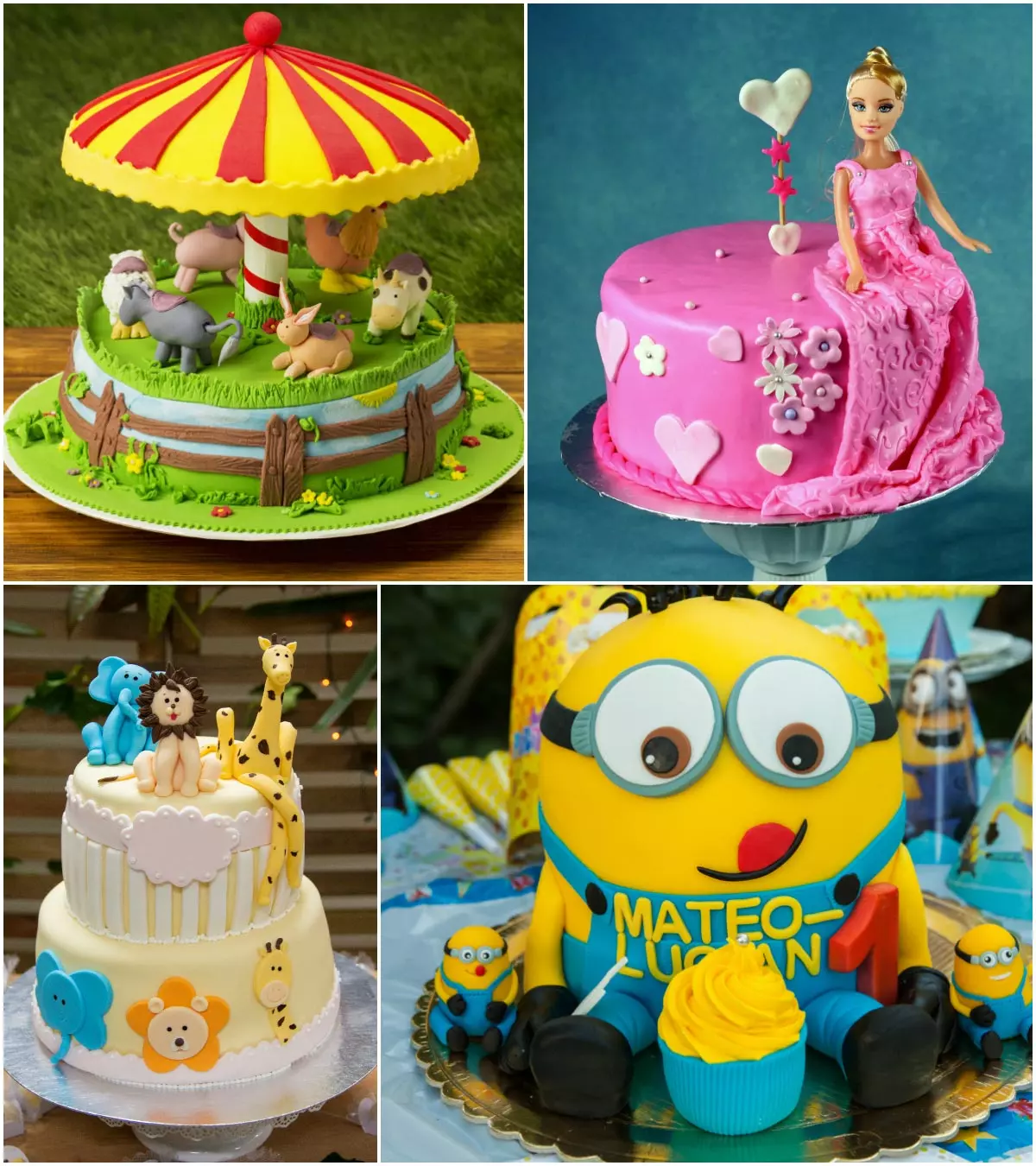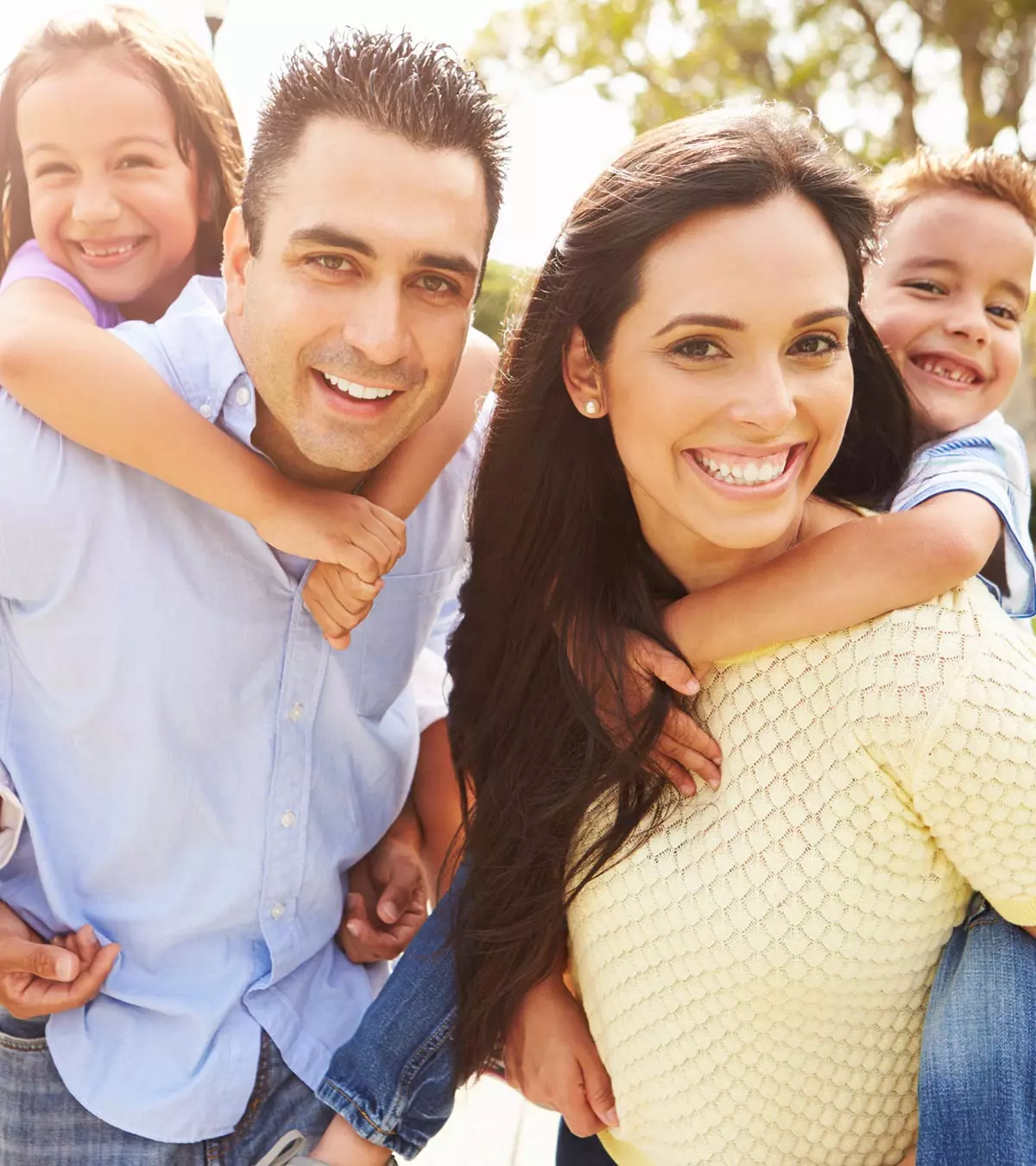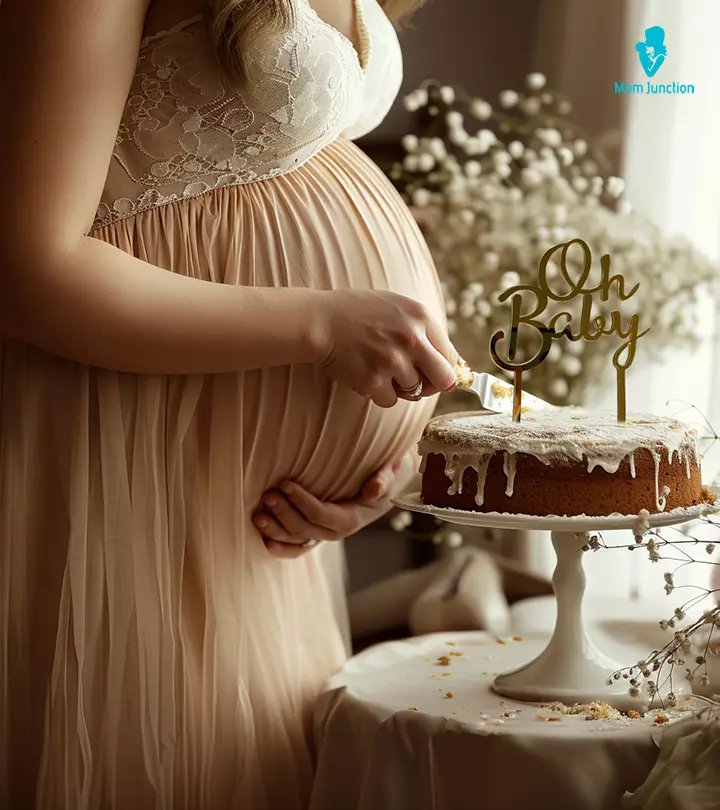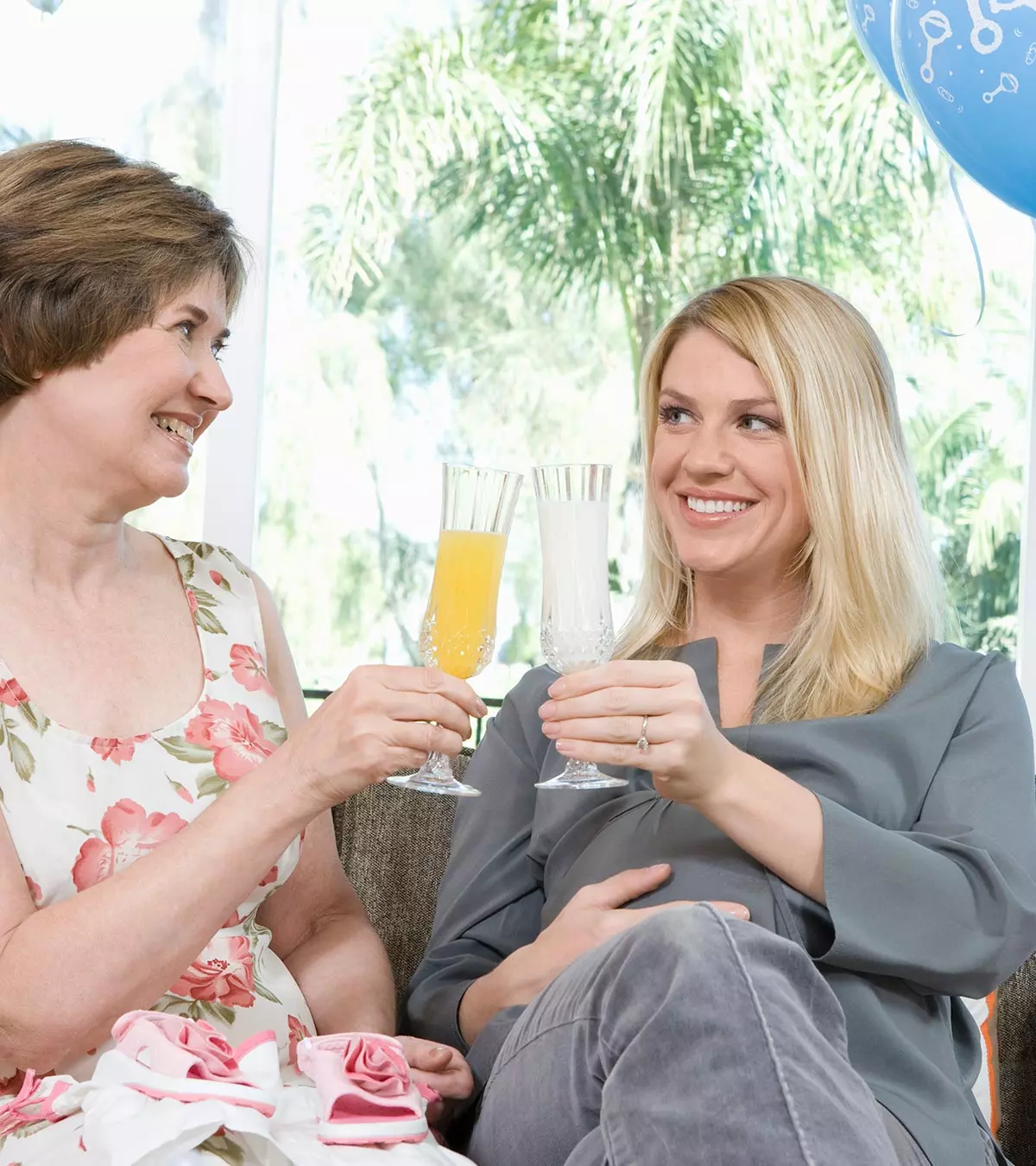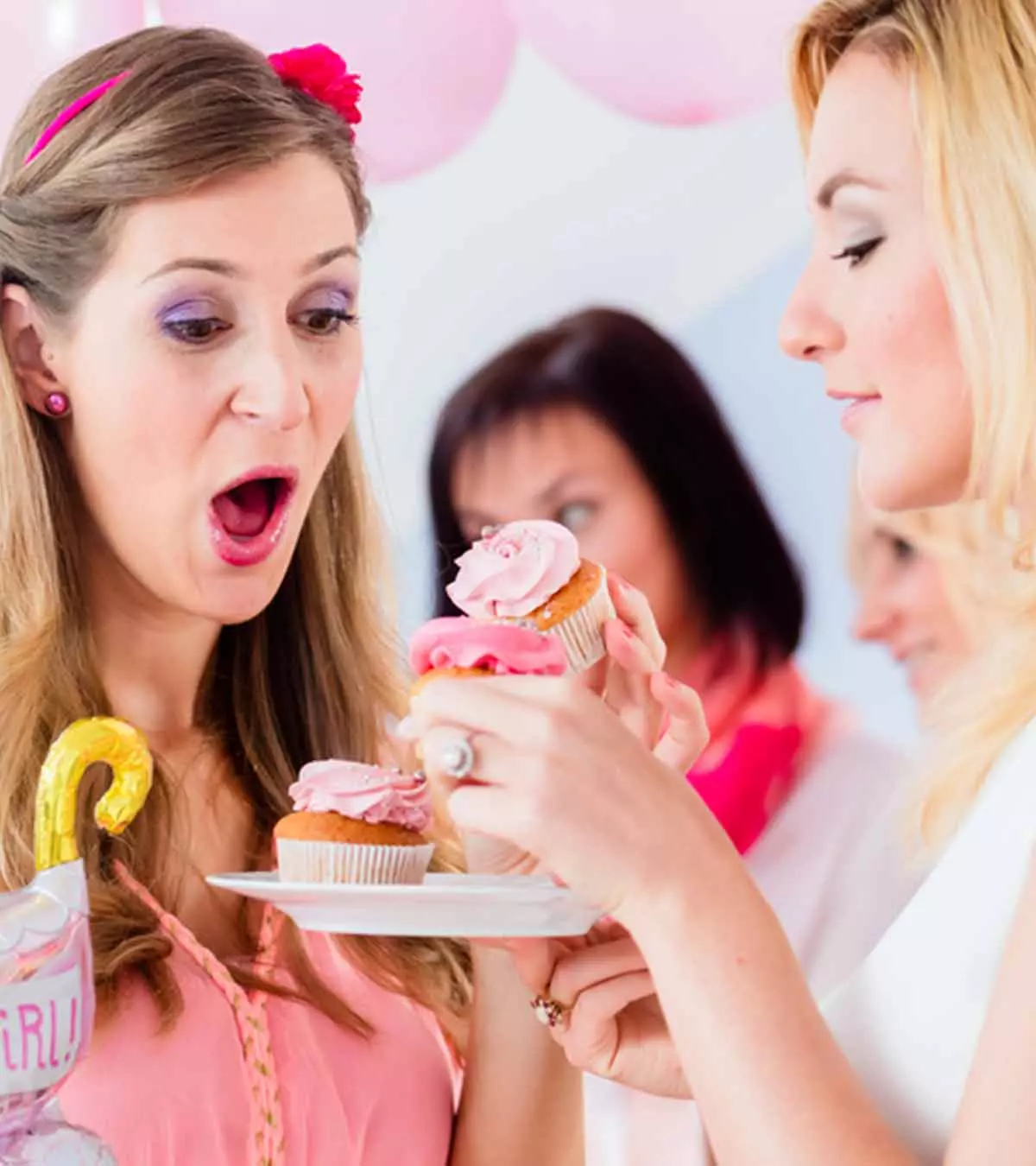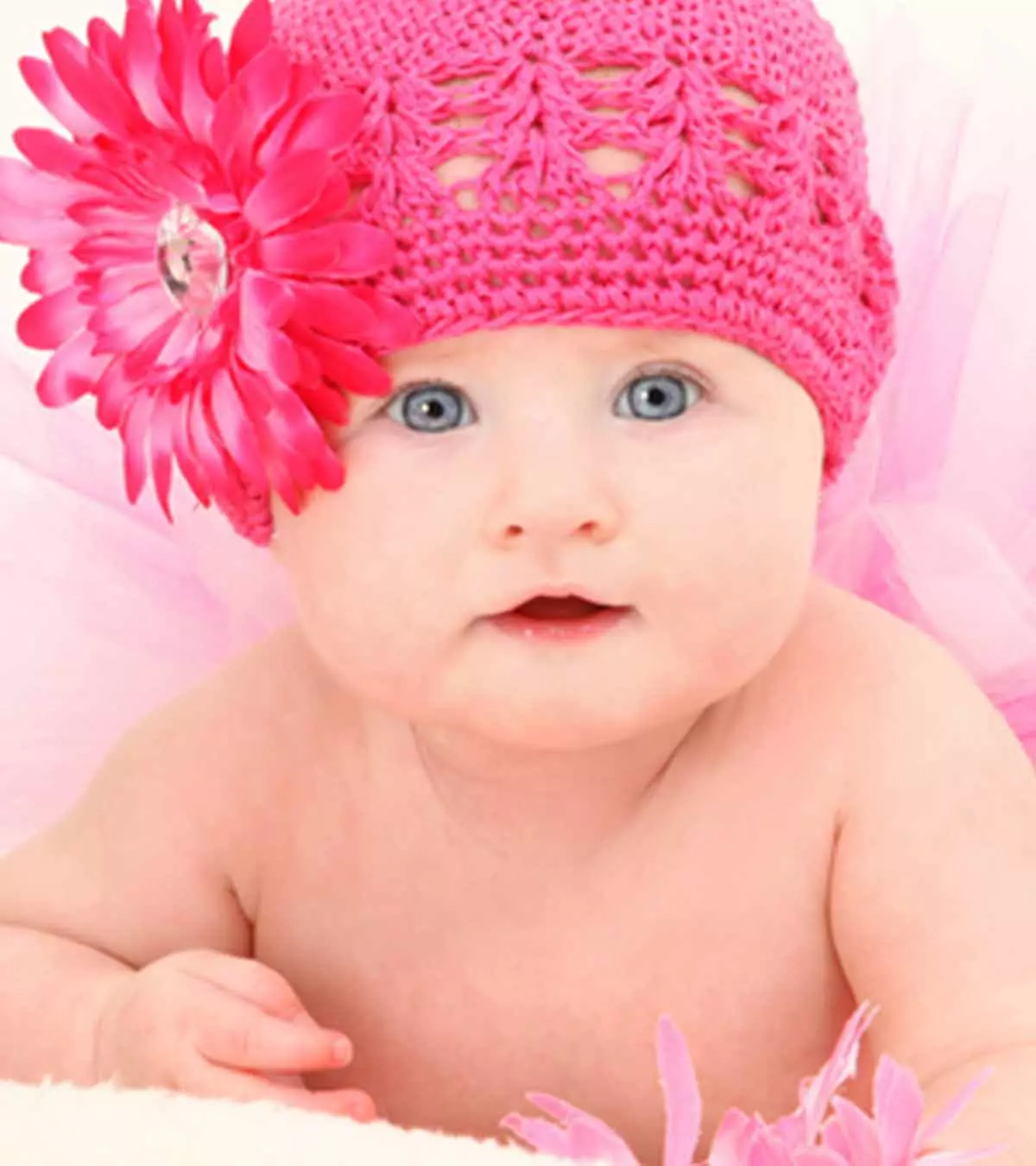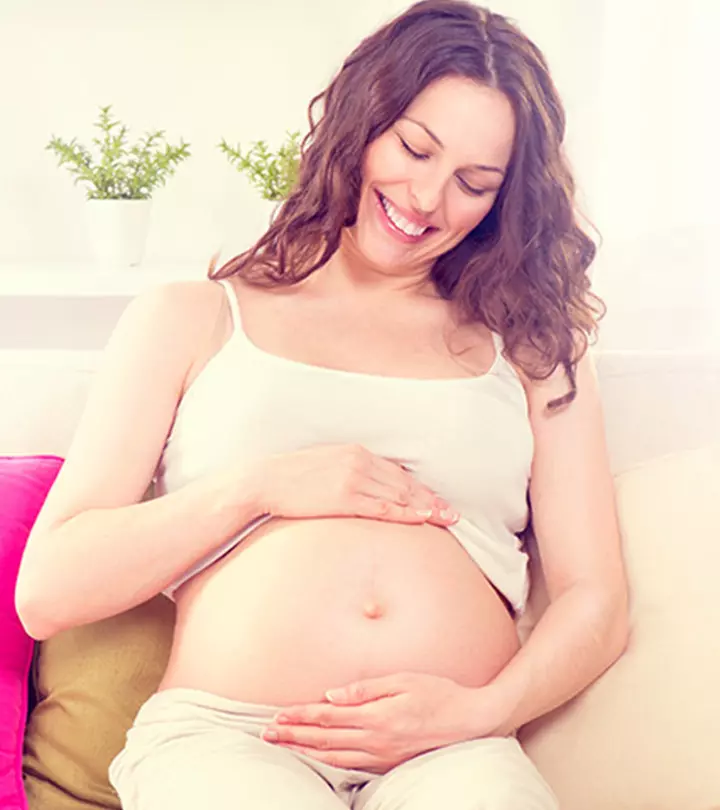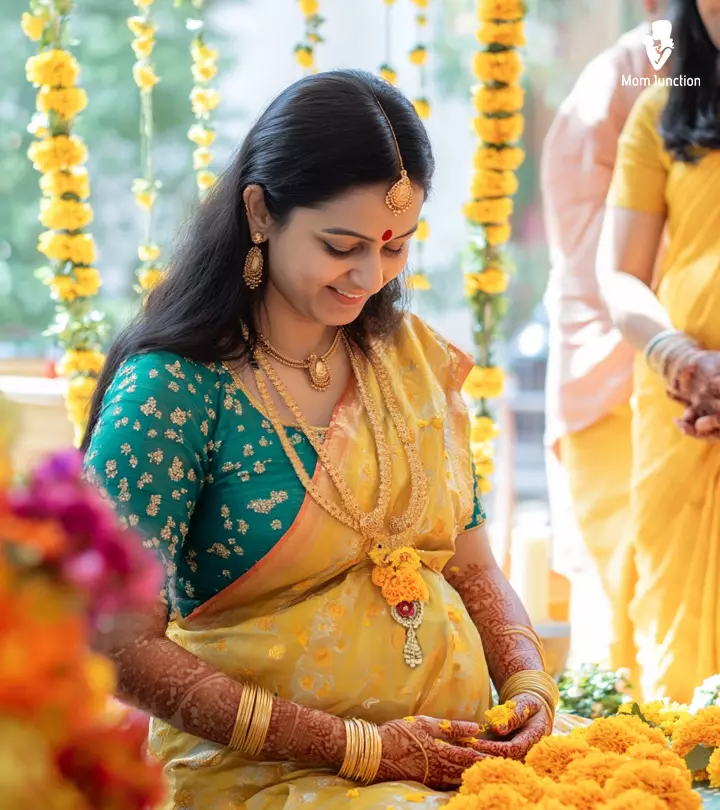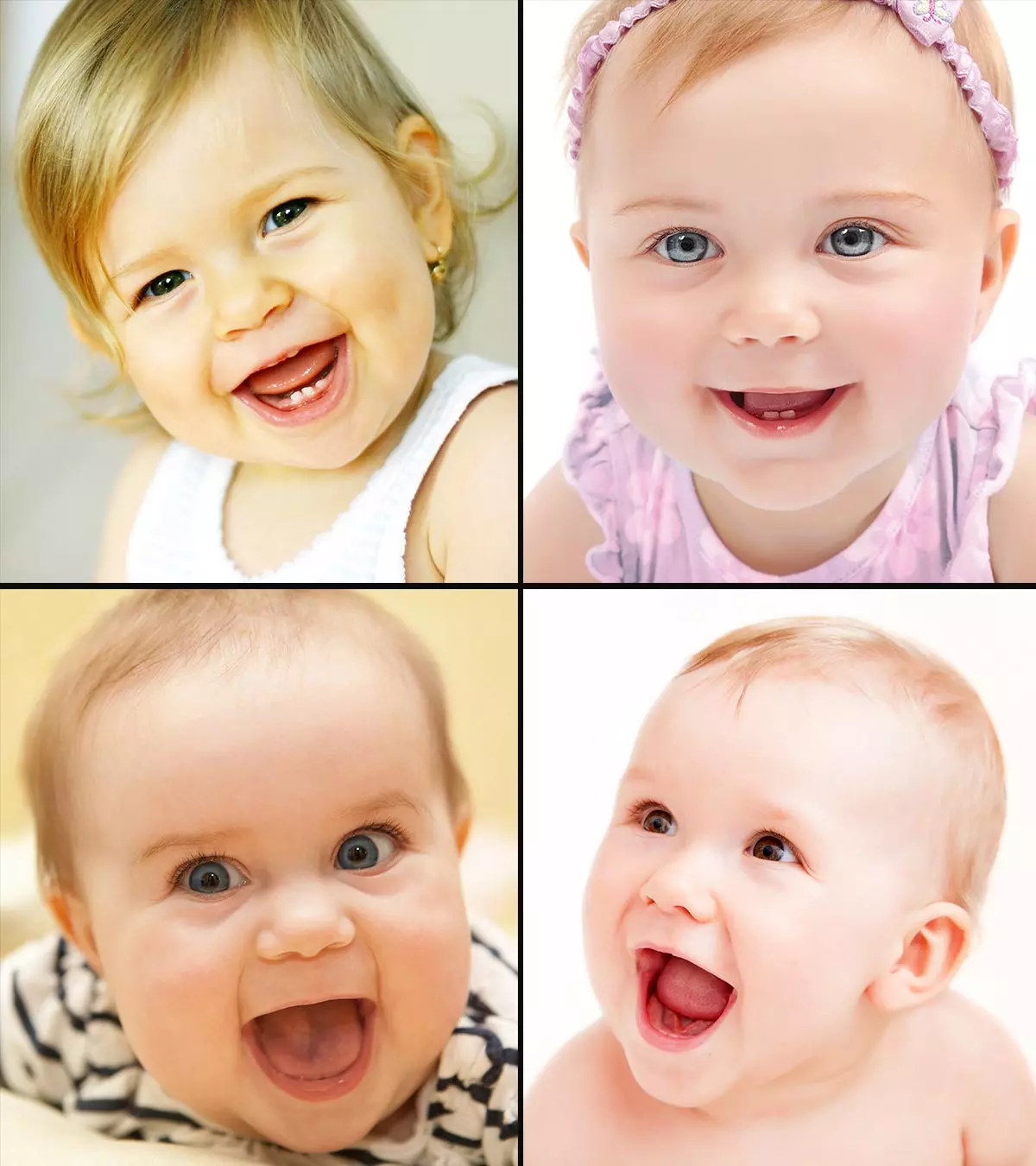
Image: MomJunction Design Team
Every smile on your little one’s face are precious moments for parents. You can capture these moments by clicking a cute smiling, joyful baby picture. Your baby’s first smile may be a reflex (1), but as they grow, babies start understanding happiness and warmth and communicate these emotions through their angelic smiles and happy expressions. The first gummy smile showing a tooth or two can melt away all your worries instantaneously. As your baby learns to respond to your presence or actions, smiles become their way of communicating their pleasure and help you feel a strong connection with them. Check out some cute smiling baby images here and read on to understand how babies develop their adorable smiles.
Key Pointers
- During the first weeks, babies display early reflexive smiles, lacking expressive joy.
- By around six weeks, reflexive smiles become noticeable, followed by deliberate smiles responding to stimuli like voices and touch.
- At two to three months, babies intentionally smile to engage with others, responding to playful sounds.
- Around nine months, babies develop familiarity, selectively smiling at known faces and objects.
75 Cute Smiling Baby Pictures
Check out these cute smiling baby images that will surely make you smile.
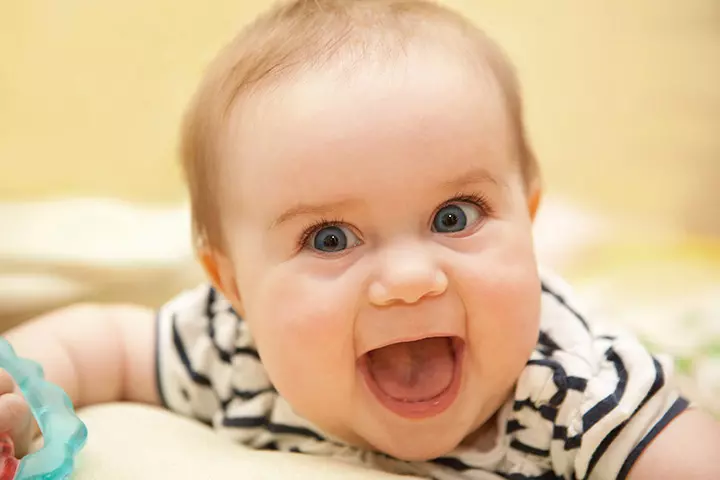
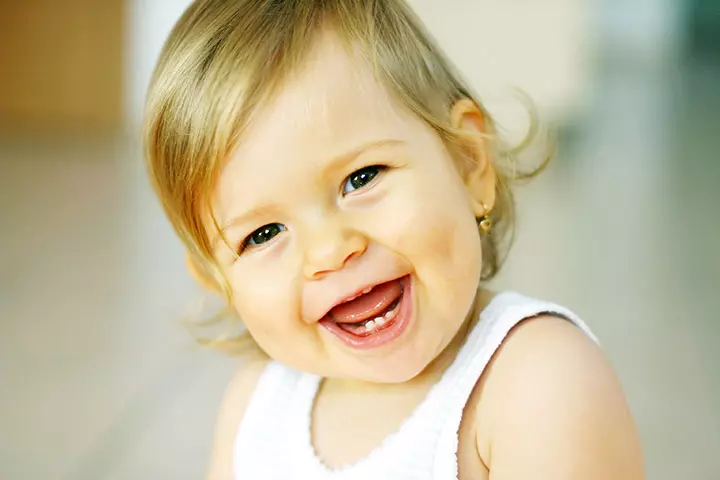
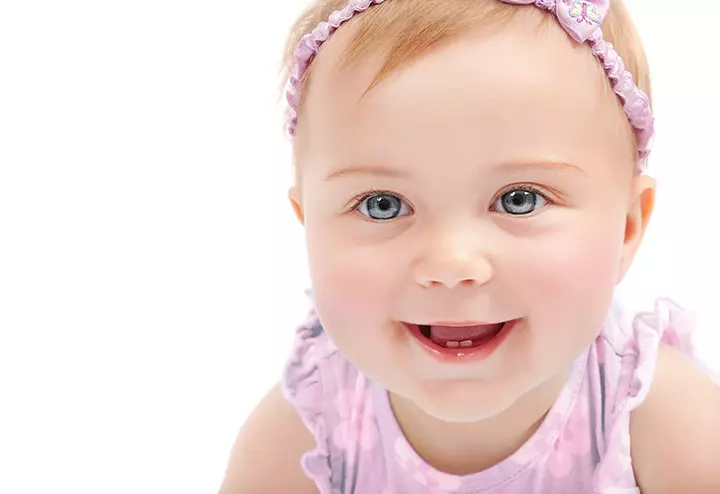
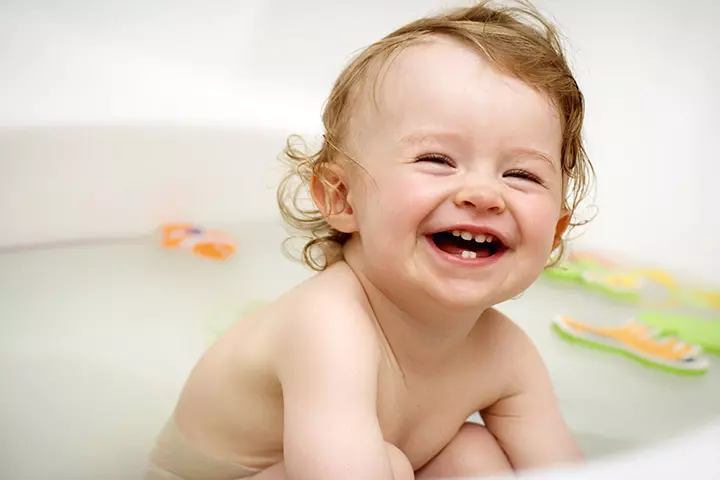
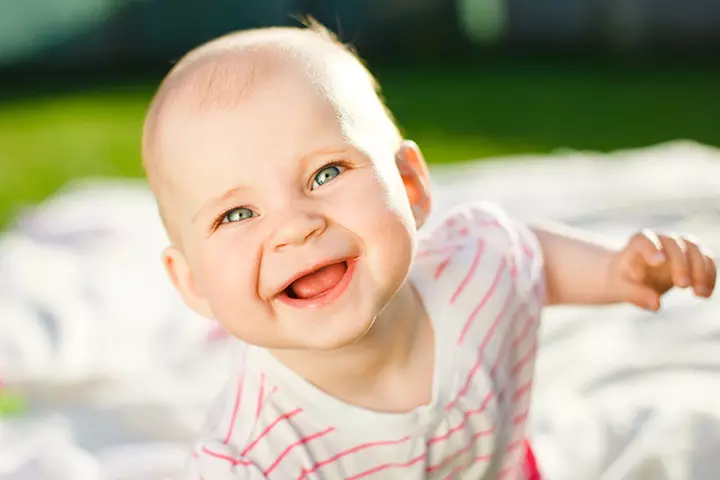
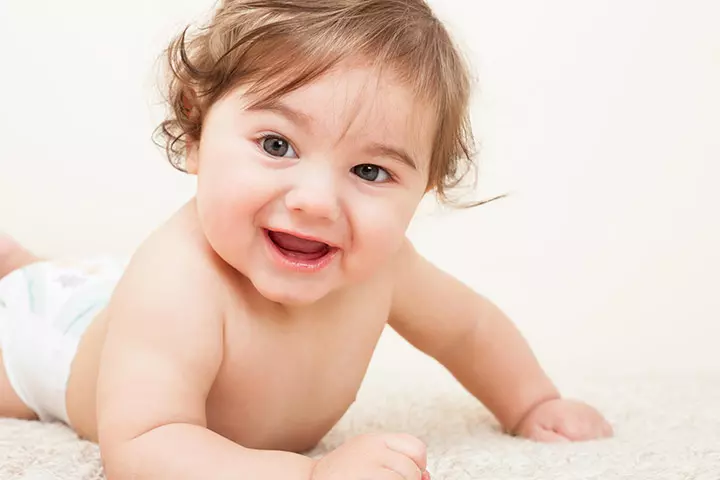
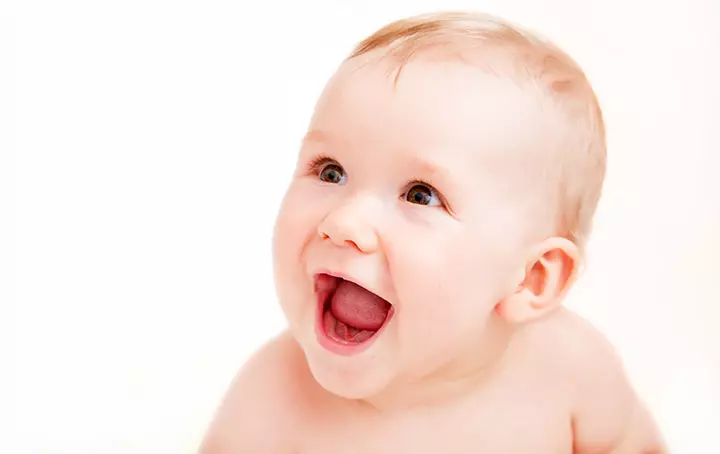
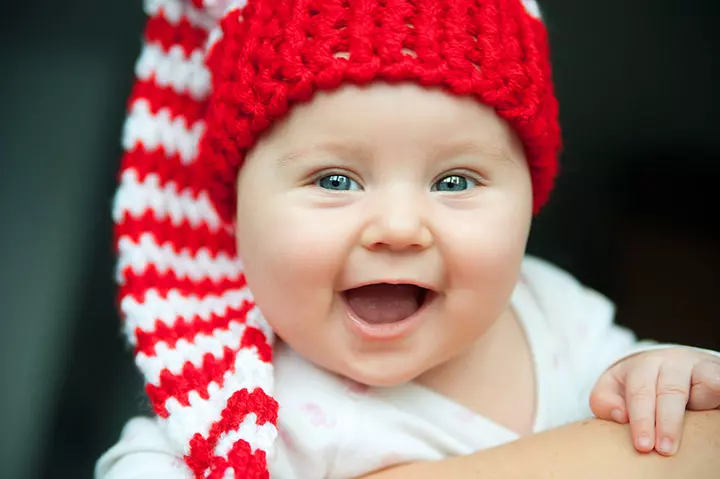
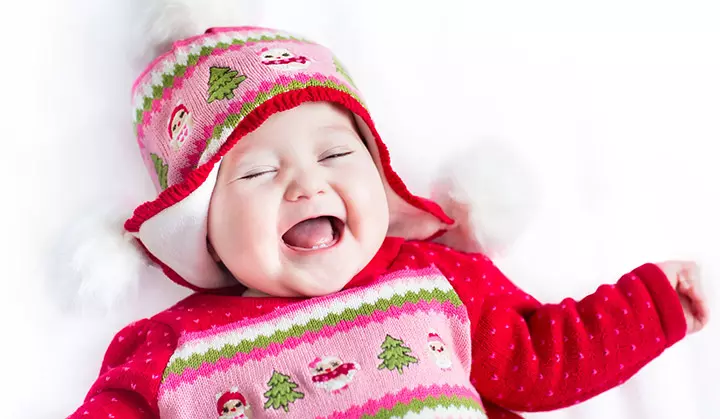
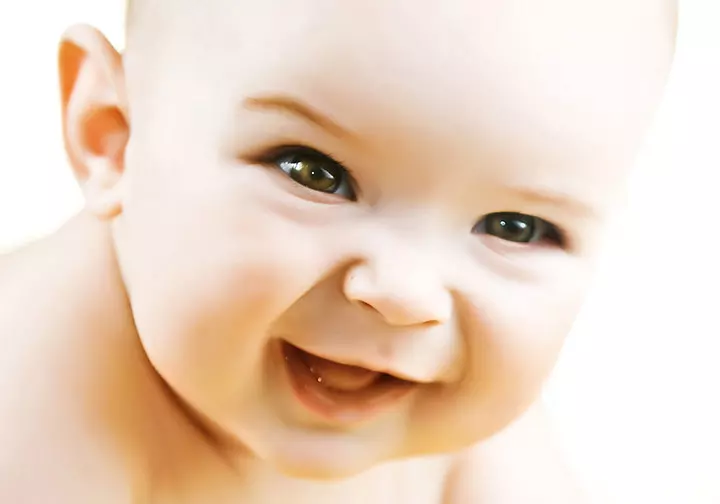
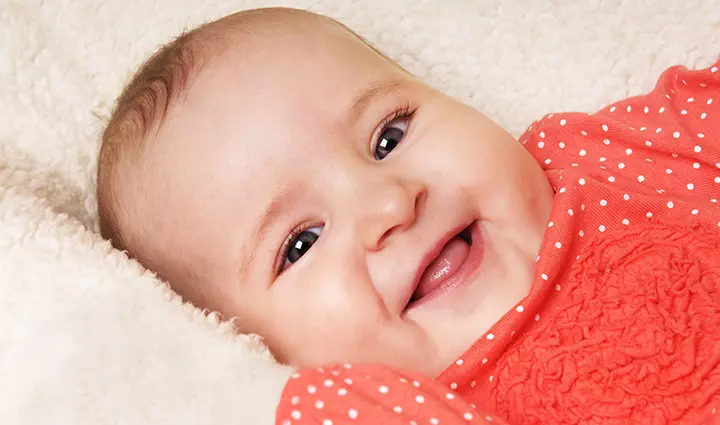
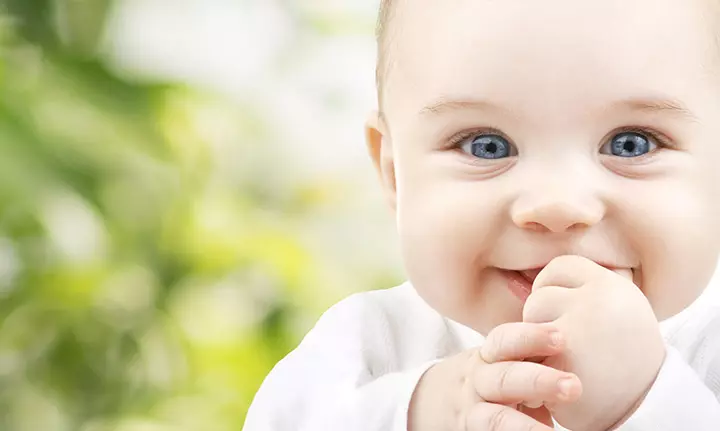
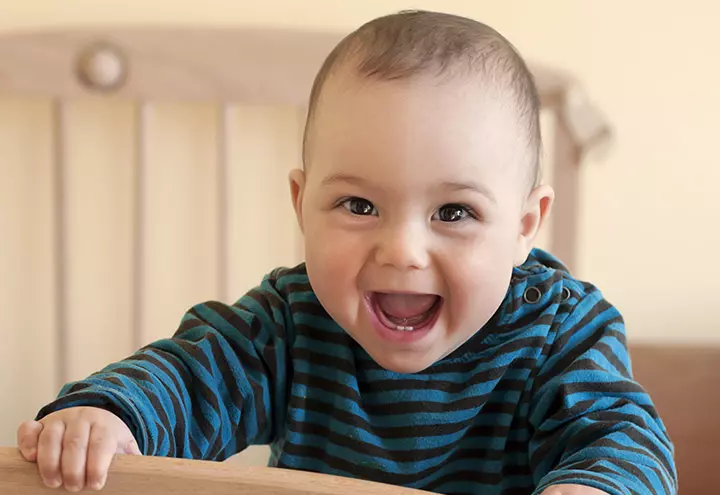
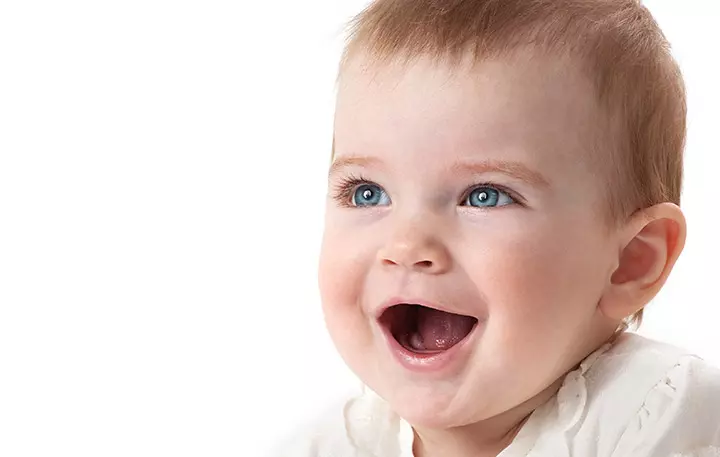
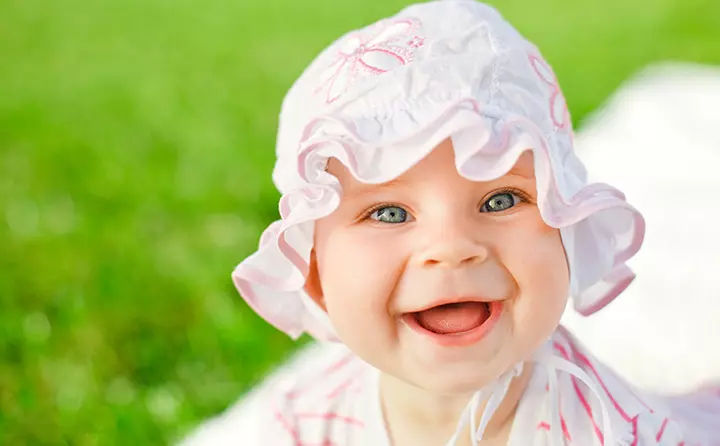
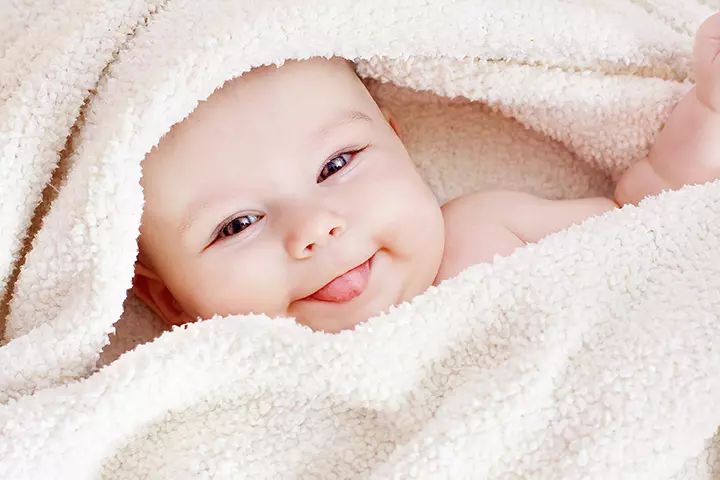

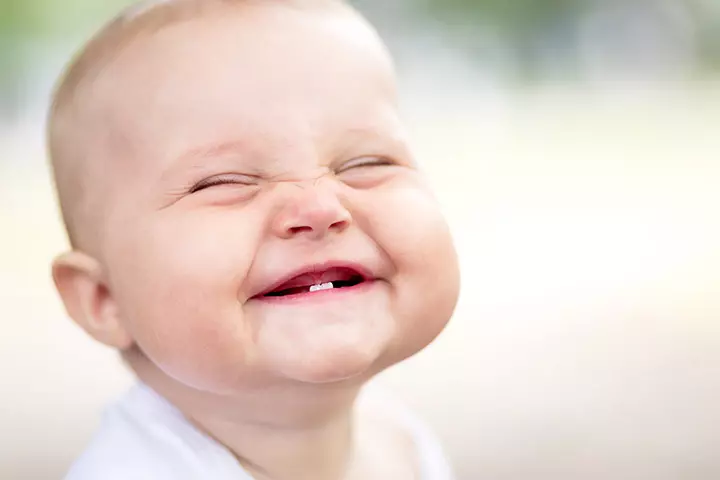
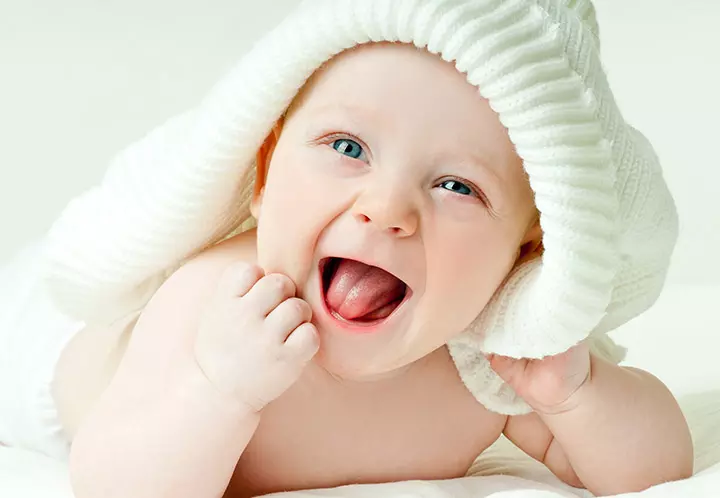
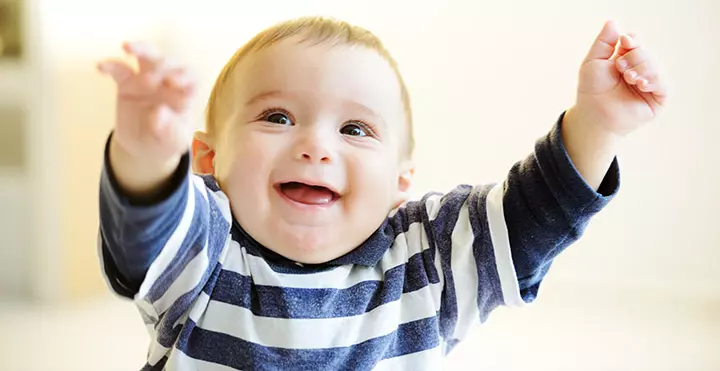
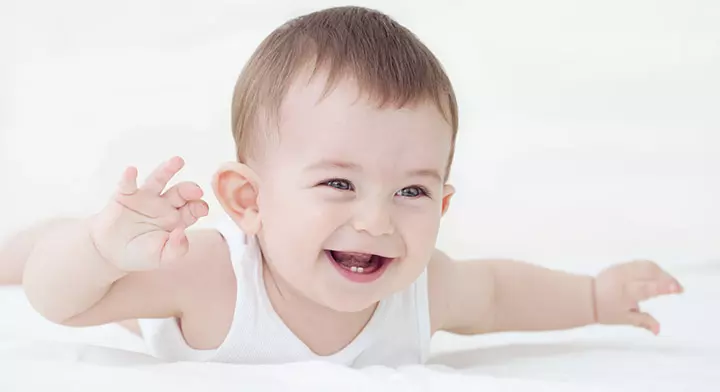

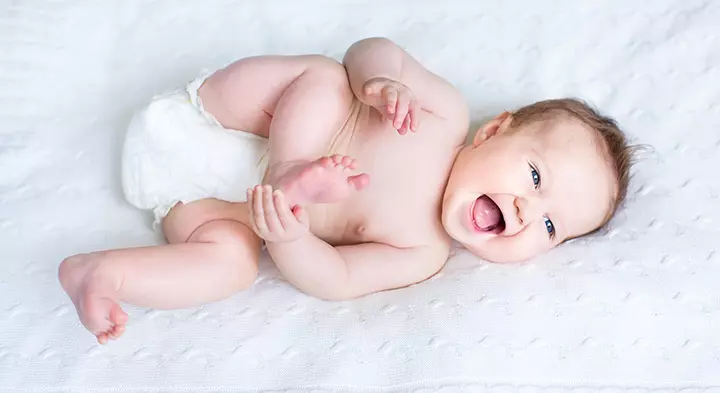
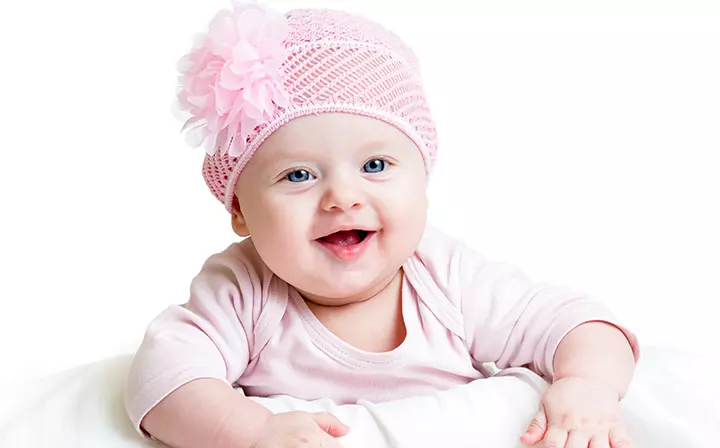
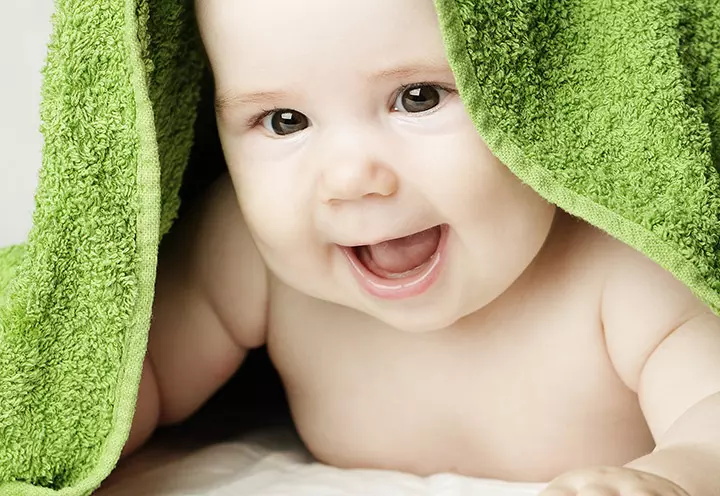
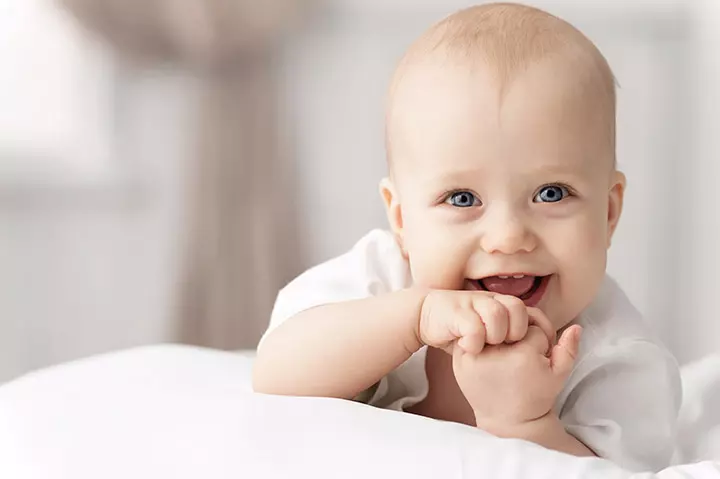
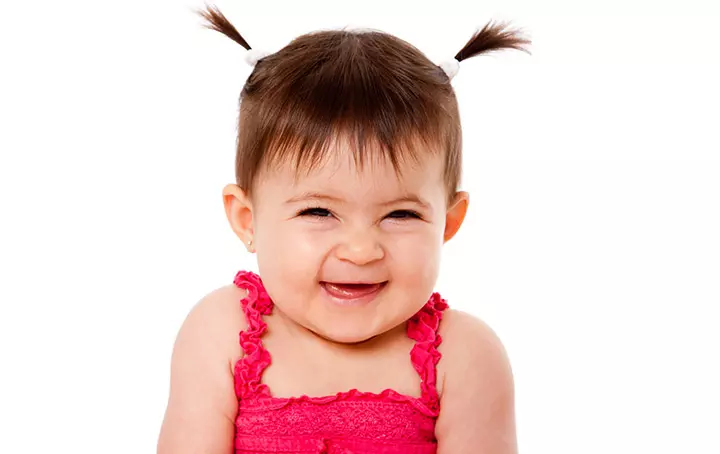
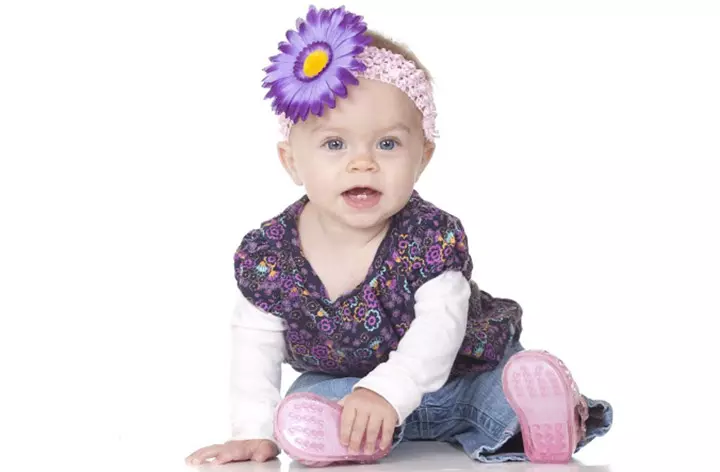
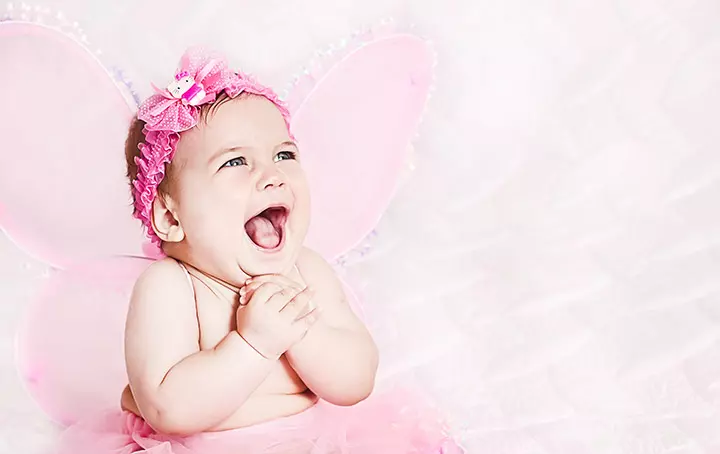
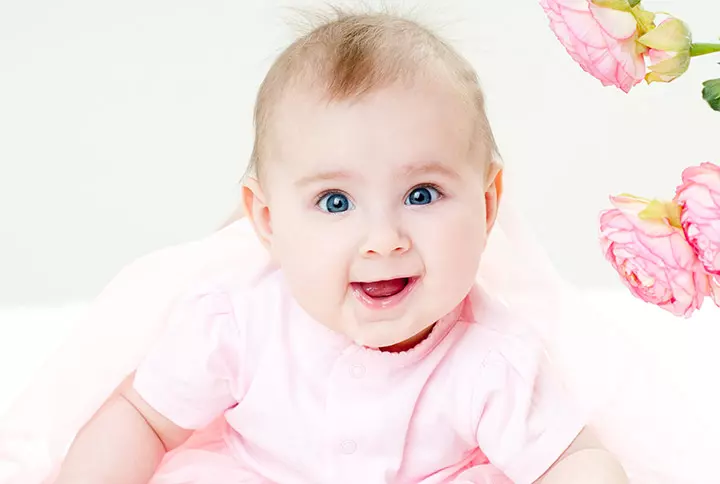
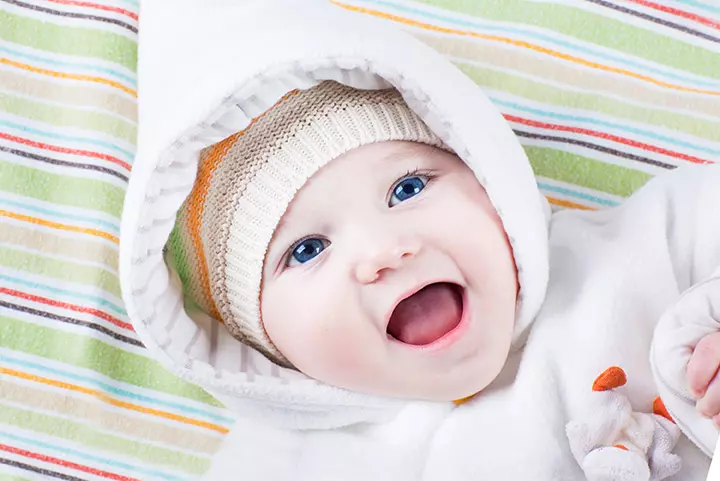

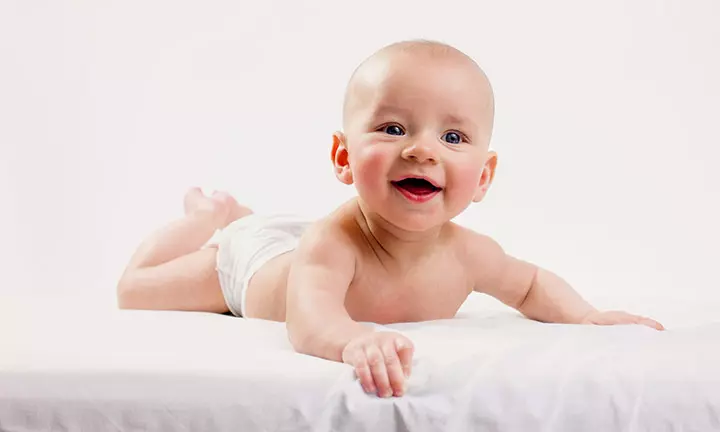
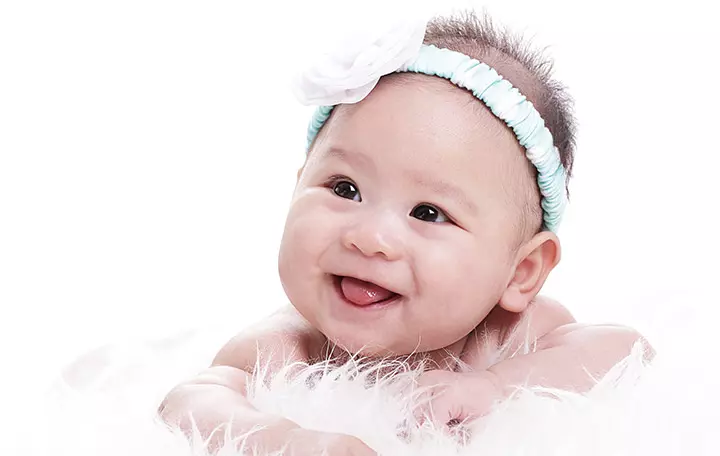
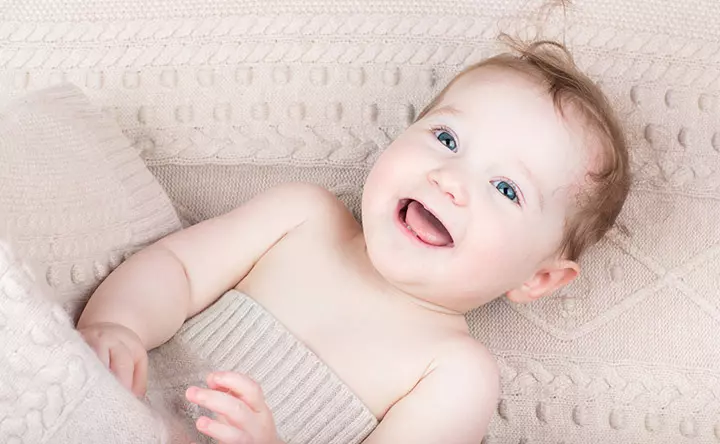
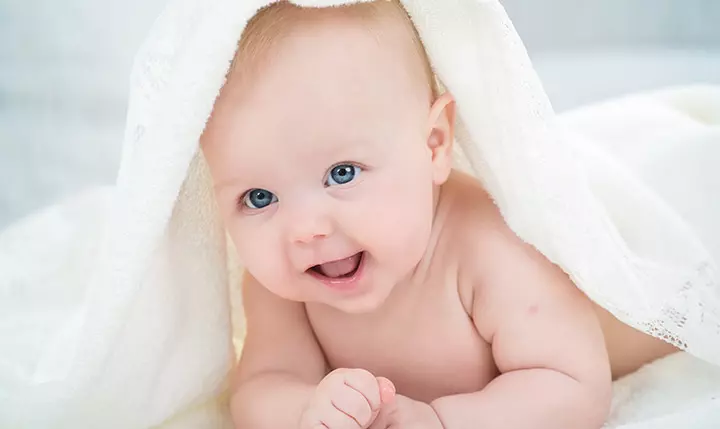
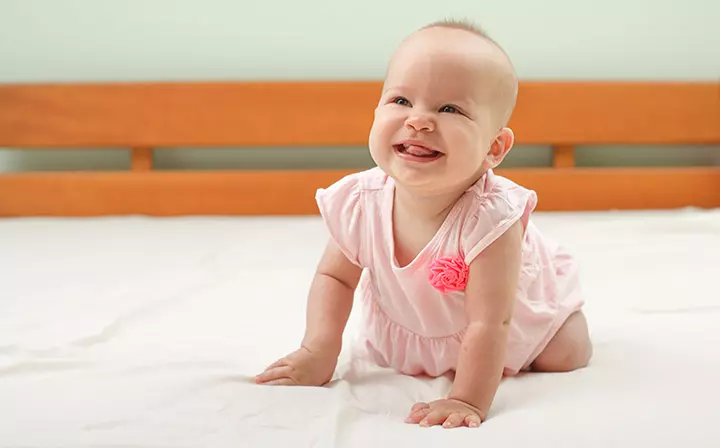

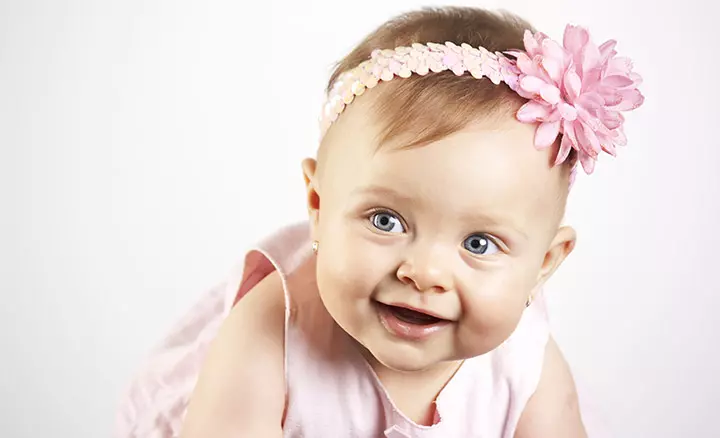
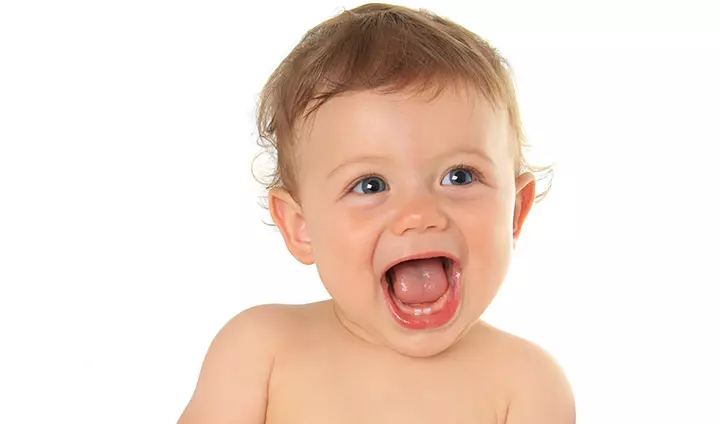
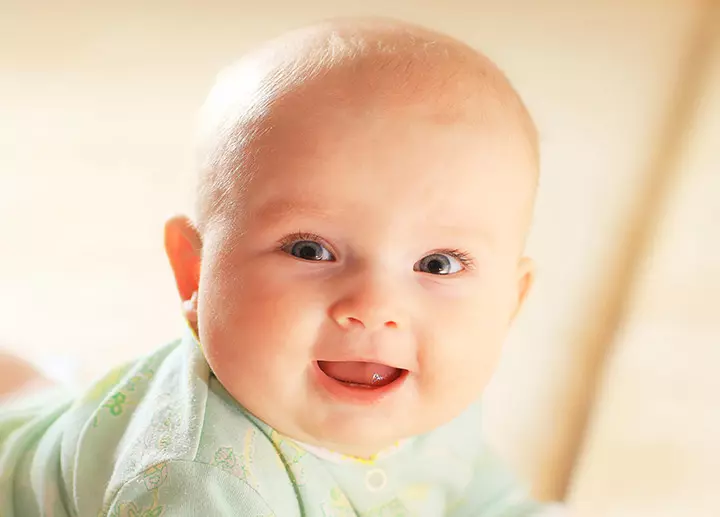
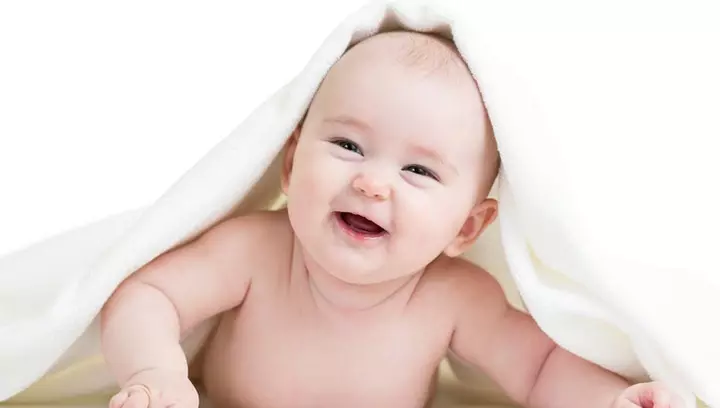
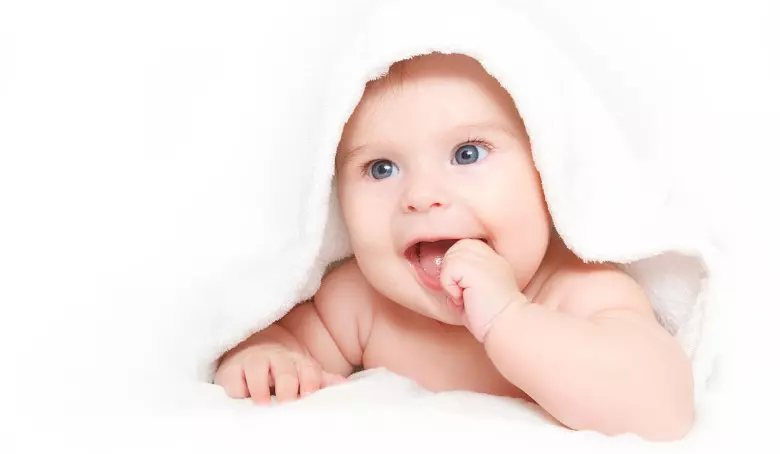
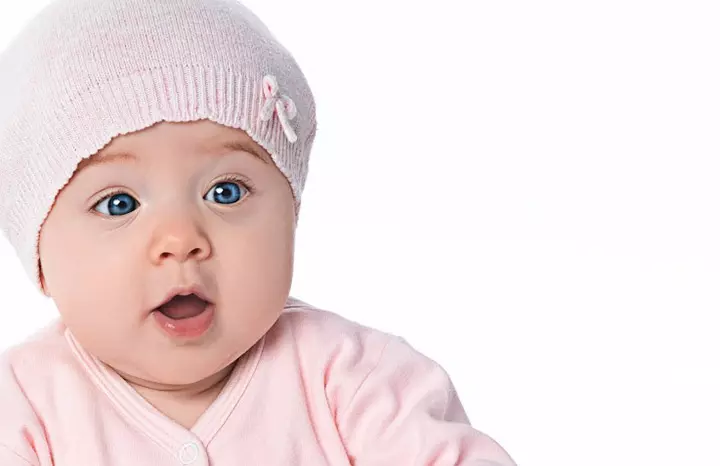
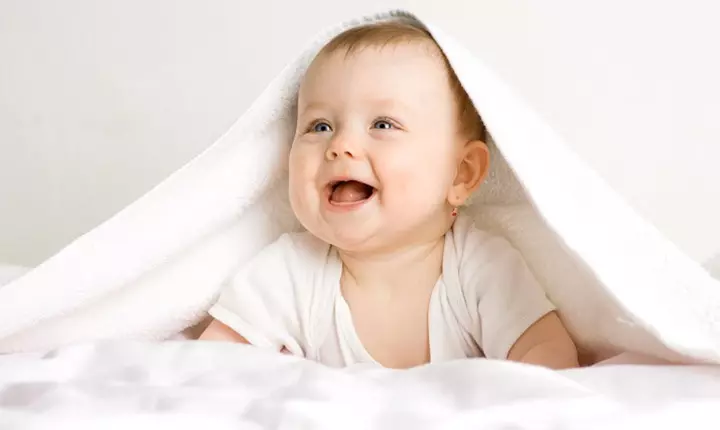

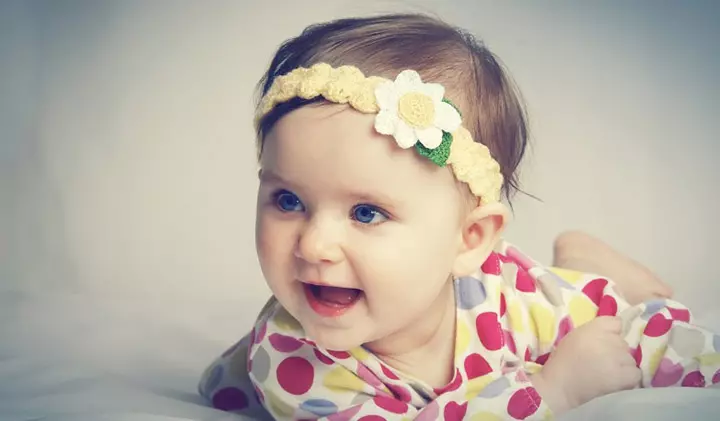
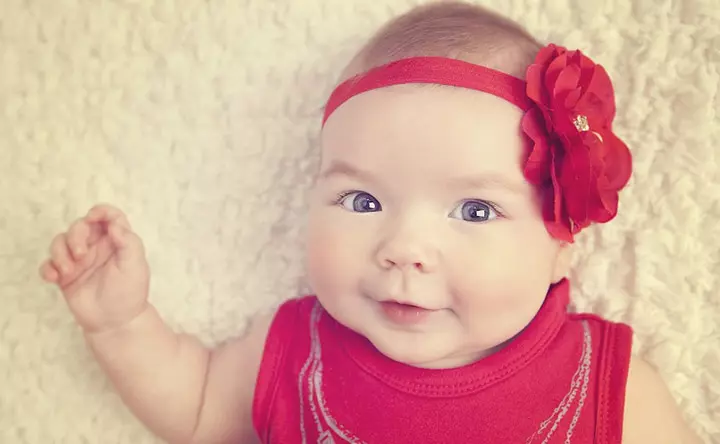
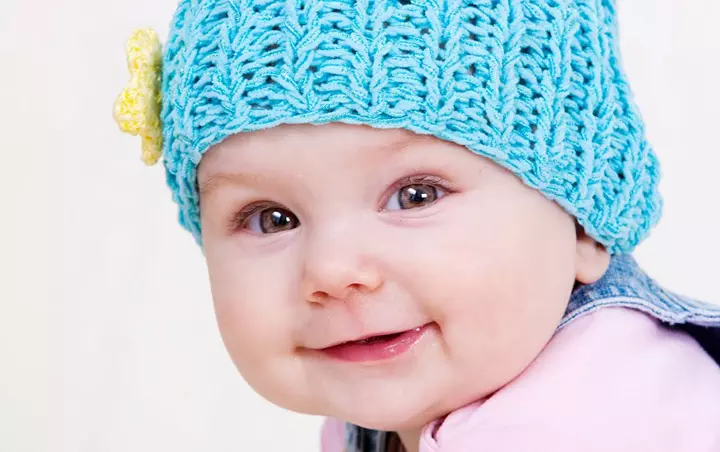
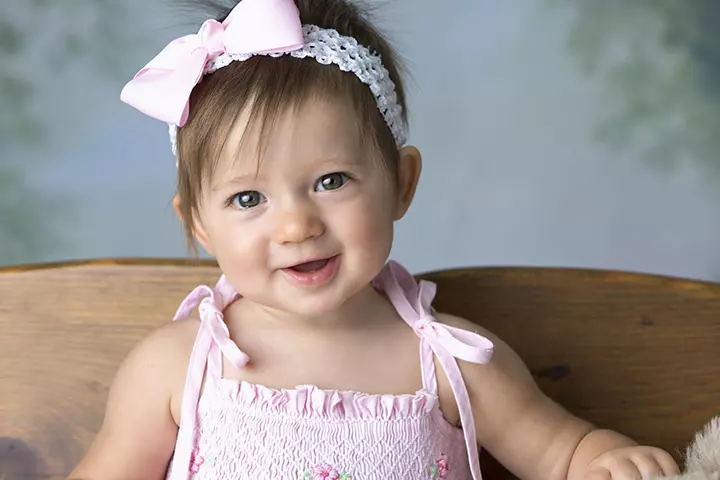
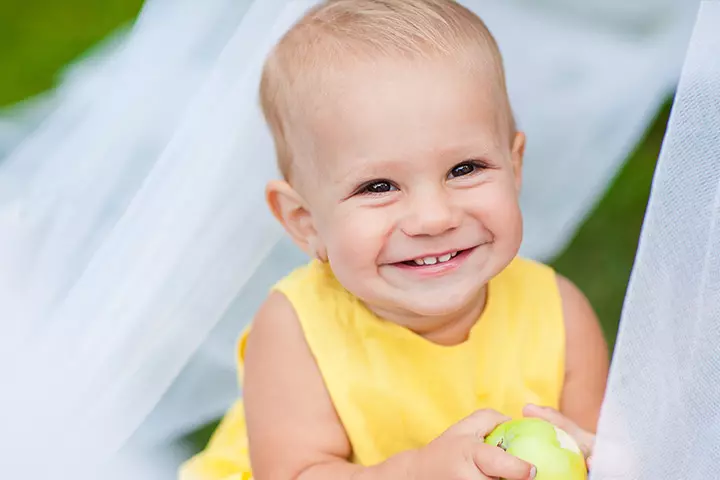


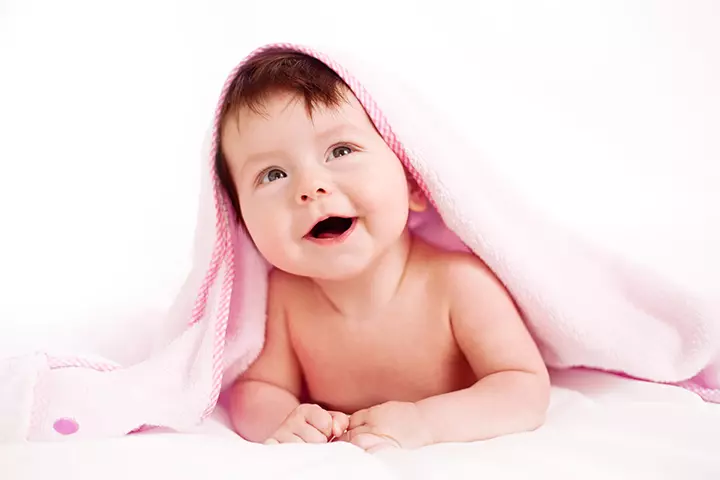
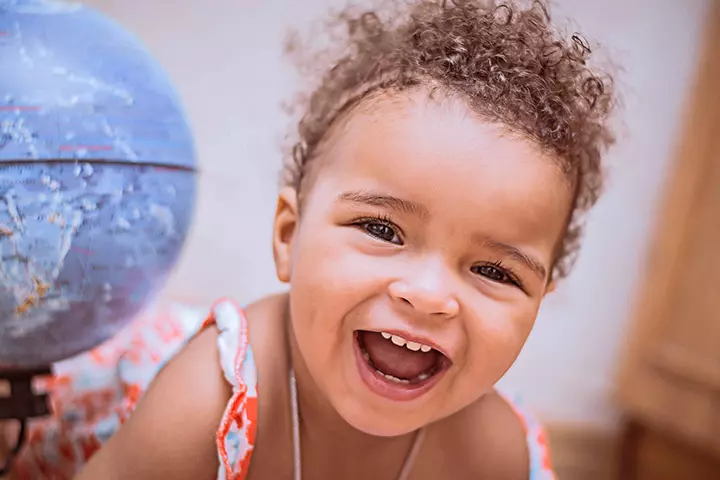
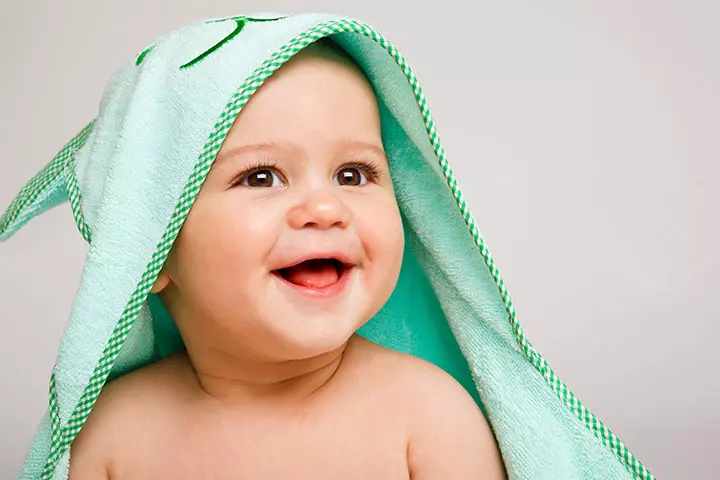
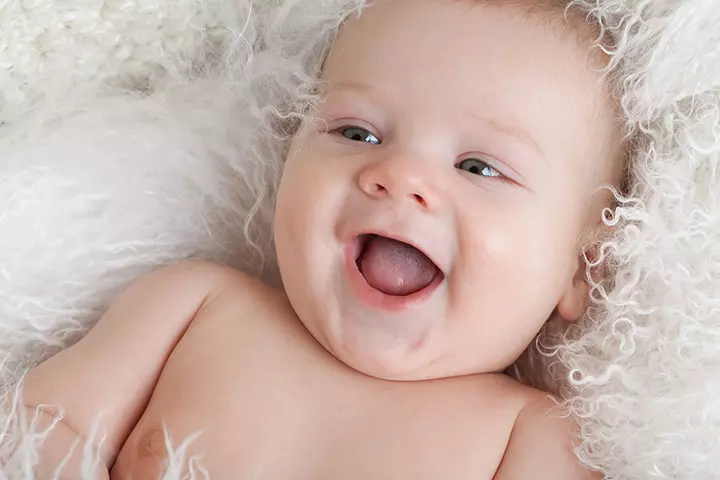
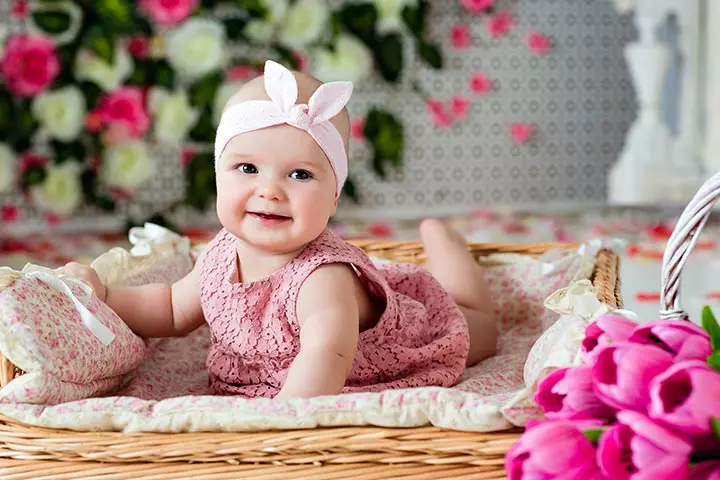
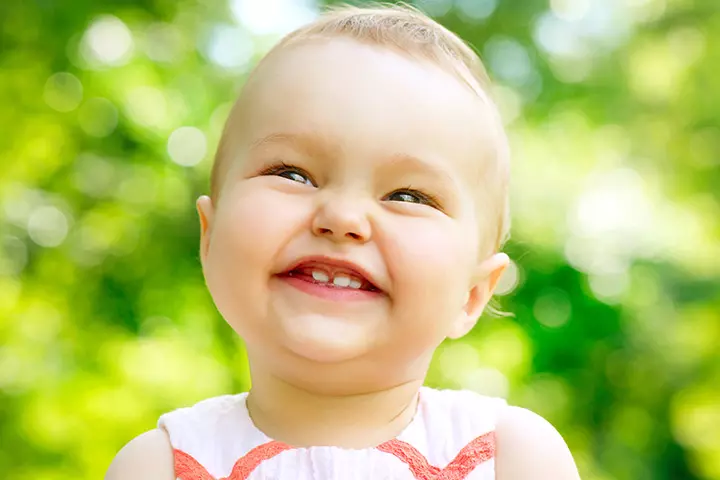

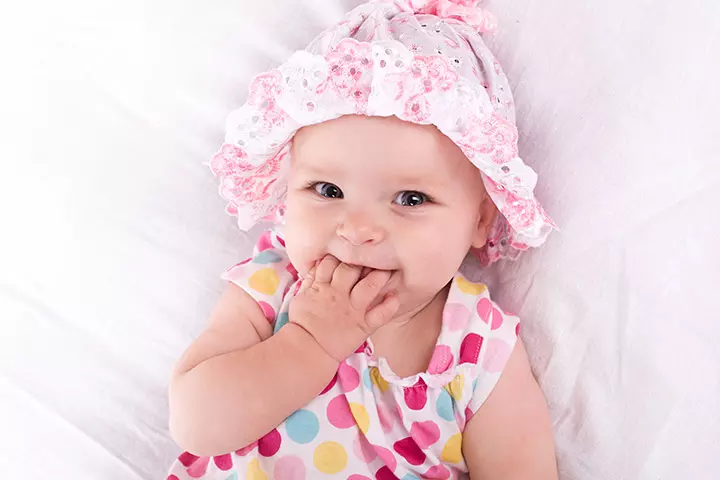
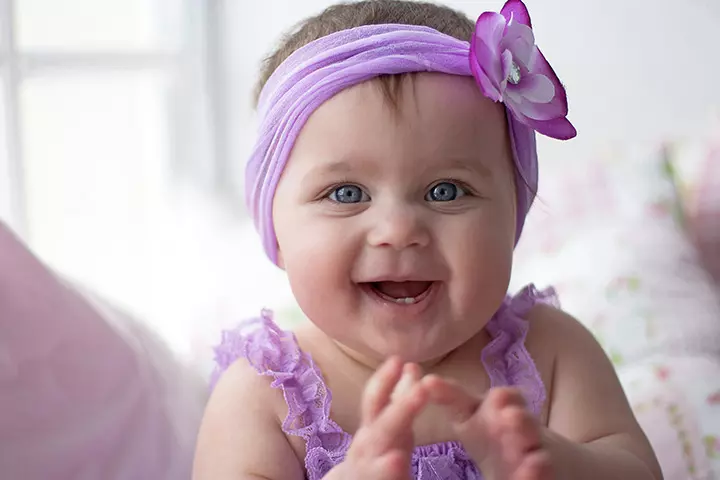

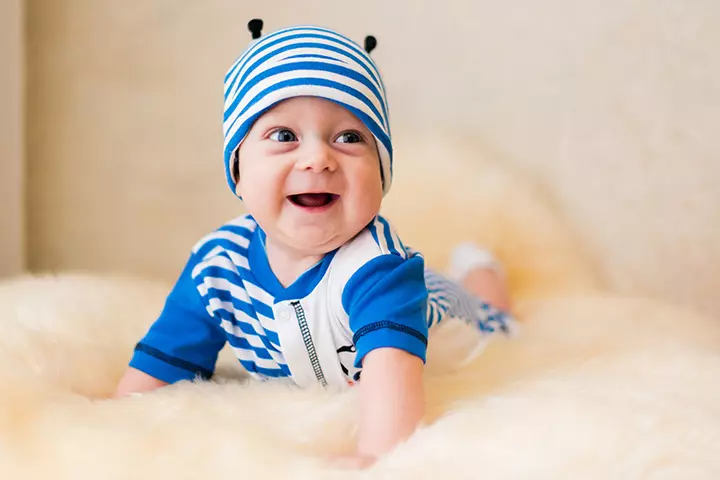
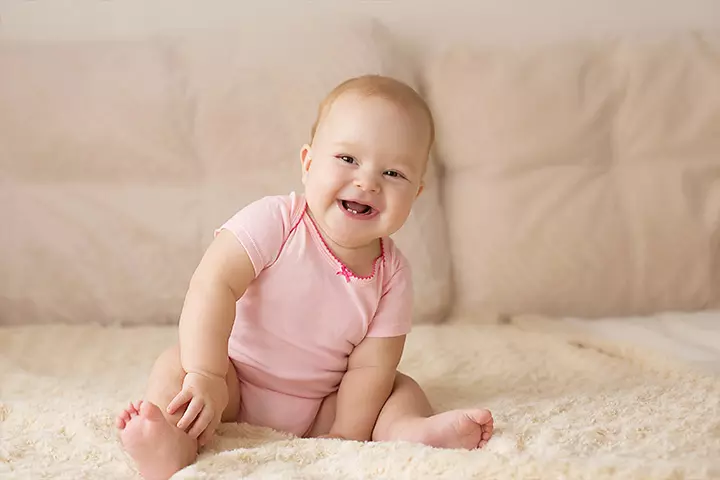
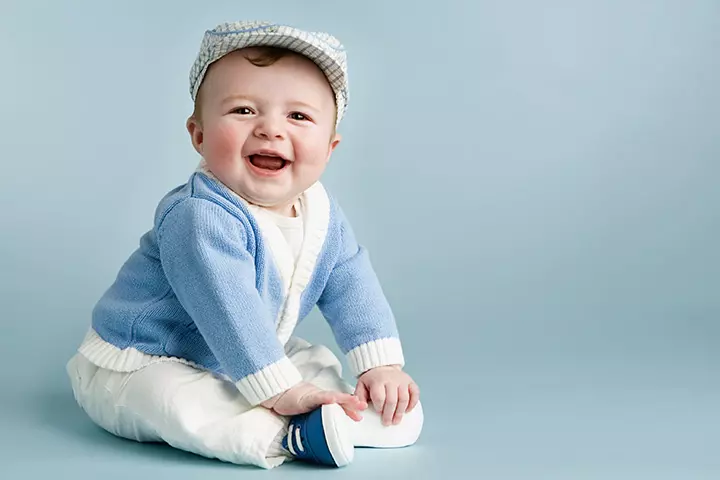

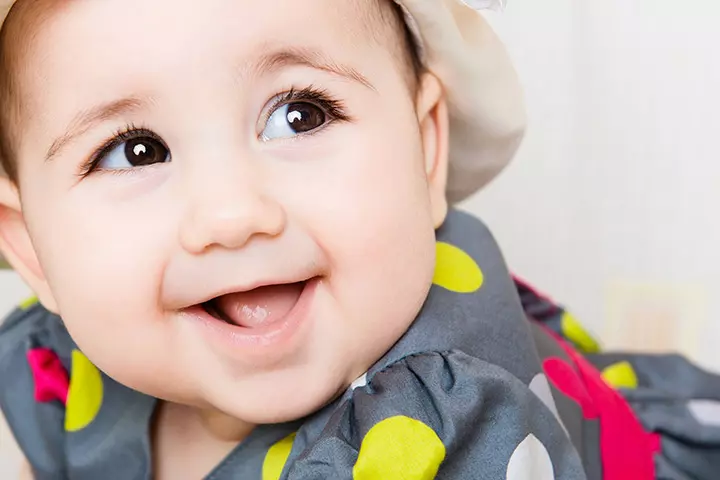

How Do Smiles Develop in Babies?
One of the most common questions parents ask is, “When do babies smile?” A smile marks an important milestone in your child’s development. In the initial weeks after the baby is born, you cannot even expect a meaningful eye contact, the baby only will have a toothless grin or smile. A smile at this age is only mechanical and does not have any expression of joy.
After about a month, you can expect your child to start identifying you and have eye contact with you, which is a pleasing moment all in itself. After five weeks of age, you can identify with your baby’s first smile as a response to you playing with him/her or smiling at him/her or in a reply to another human (1), to a sound or to some motions and signs.
Many babies feel happiest in the morning. Kate Bryan, a mother of three and a blogger from Raleigh, NC, writes about her baby boy David. She gushes about how thankful she is to have a baby that wakes up so happy in the morning as she writes, ”We swaddle him at night, so the first thing I do (in the morning) is unzip his swaddle. He stretches his arms up, making little fists, and lets out a sigh of relief. And then the smiles start. I lean over the crib, putting my face as close to his, and say, ‘Good morning David!’ He looks up at me and smiles so big his eyes turn to tiny slits on his face (i).”
Socialization:
The child first starts to mingle with you. You will be the first companion for your child, and he/she enjoys the sound of your voice, the view of your face and the feeling of your hands. With your help, your baby will become aware of others and begin to take pleasure in others’ company too. This marks the starting point of the many developments of your child’s social skills.
Reflexive Smile:
You will spot your newborn baby’s first smile when he/she is asleep. At this stage of 6 weeks, it’s probably just a natural response. Your baby develops some muscle movements during the first few weeks, along with the muscles in the face, and reflexive smiling is part of that muscle movement.
Responsive Smile:
As the baby starts to grow, they start to smile at the things they find pleasing, such as voices, faces, and touch. The baby’s reaction is a sensory experience, not a social response. The baby doesn’t have a clear feeling about who you are.
Give your baby plenty of space to study your face while you talk softly to them. Try to connect with them through expressions and they may start to respond to you slowly. The responsive smile would be during the 6 to 8 week period.
Social Smile:
During the 2 to 3 months stage, your baby’s smile starts responding to the internal things that catch the baby’s attention. At this stage, the baby wants to connect with others. Your baby will smile when he/she sees you and will respond when you make silly sounds like oinking, beeping and mooing.
Your baby also will learn that he/she can get a response from you with just a smile. The baby will express himself by giggling, squeaking and humming funnily. Your baby starts responding to your by moving his arms and legs for attention. You cannot expect your baby to smile when you want the baby to smile. Your child learns to identify your face and smile when you feed him, give him hugs and change his diapers. You would understand by his smile that how he likes to be held, treated and comforted. In between the 2 to 3 months the baby starts developing the social smile.
Undiscriminating Smile:
When your baby becomes 6 months old the baby starts an undiscriminating smile. The 6 months old baby starts smiling at you no matter what you do. Your baby at this stage may smile at anyone who responds to her/him. The cute baby smile has become more meaningful now. The smile can be because you were far away from him for a long period and your back or the child has done something.
The smile can be because the child starts developing memory. The child spends long time staring closely the nearby strangers and may take time to respond and on few circumstances the response may change to smile or cry.
Selective Smile:
After 9 months there would be development of understanding. Selective smile starts during this period. Your baby starts to know that you are special to him/her and starts differentiating you from other people.
At this age the child “Strange anxiety” plays the role. Your baby stops smiling at the strangers. It would be a bit disappointing that your baby did not respond to strangers, but differentiating faces is really a good sign of healthy development of the baby. Your baby’s feeling towards object stability is stronger. The baby has the ability to know something is there even when they can’t see it. You can cheer up the baby to smile by playing “peek- a- boo” game. It is a game where eyes are hidden from view with objects. It is the final laugh getter at the stage of 9 months.
Sense of Humor
Now the baby develops a sense of humor. Babies at this age laugh and laugh if you make silly noises. When your baby thinks of something playful, the baby wants to get the response from you too, so laugh along with the baby.
Make a funny face by dropping something on the floor. Your baby may find it exciting. Surprises are a big essential element in making babies laugh at 12 months.
What Makes Babies Smile?
Your baby loves looking at you and you love looking at the baby. Jump up and down and make a simple sound, it makes the baby laugh. Play peek-a-boo with the baby. Lean closer to your baby and kiss on her nose. Hold a colorful object which is soft just in the front of your baby, let the baby reach for it, then hand it over, makes the baby laugh.
Tickle a feather on the toes of the baby. You need to find out what makes the baby funny. Do the same the baby would enjoy.
You can try blowing air though your mouth on your baby’s tiny belly, hands and feet to see if your baby smiles and laughs.
You can also pretend to eat the tiny fingers and toes of your baby- this often makes most babies laugh.
Blow bubbles before your baby- it undoubtedly makes the baby smile.
Your child may love to play with his/her sibling, and you may see the smile come up on his face.
Make some silly movements, even something as common movements can put a smile on the baby’s face.
Playing with her favorite toy also make a baby smile.
If your baby love to smile and act by a dance or game or song try and repeat it over and over.
Some babies love to play with a pet and enjoy.
Gentle touch will usually prompt a smile on your baby’s face. Even touch is very important in that process to let the baby know that you are there, safe and familiar.
Baby’s Early Laughs
From birth, the baby express needs that demand immediate satisfaction, especially for sleep, milk or for other matters. But it’s frequently not until that first smile, when they are between 1 and 2 months old, that we become aware of they want to social interaction.
The baby’s facial expressions let us know that they are enjoying and happy. After some months the smiling takes on a hearing measure and turns into laughter. Respond to your child’s attempts of silliness and be willing to do silly things again and again.
The baby’s first laugh is usually constrained for parents who first made him smile. The baby enjoys the funny noises and natural feeling only when the baby feels that he is secure, then only the relationship with others doing the funny stuff matters.
After some time the baby’s giggle is basically natural and feels delightful, tickling his feet, picking him up and flying him gently through the room, blowing on his belly. At about 4 months, the baby begins to laugh at the things he can see and hear.
He gets the pleasure from non-sense of humor, such as faces with wacky sounds, wide open mouths and big eyes. If your baby is laughing means he is enjoying. He will get the sense of humor when the baby is 6 months old.
Laugh Track
Humor takes an ample of variations in forms like visual jokes, play, using the element of surprise. Generally, babies really still learning how the world feels, looks, sounds in common circumstance, and so they do not get a joke when something out of hit.
Illustration: Cute Smiling Baby Images That Will Make Your Day
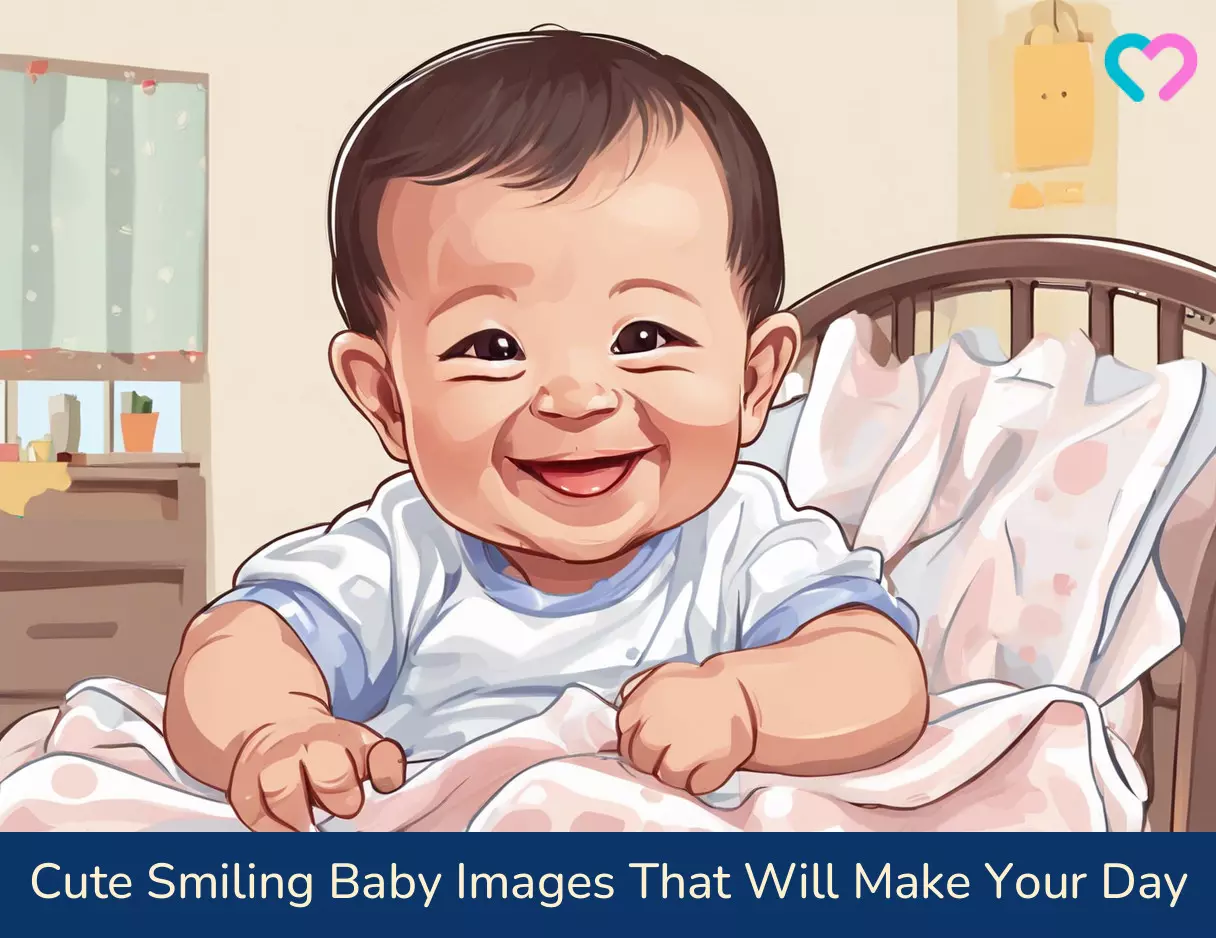
Image: Stable Diffusion/MomJunction Design Team
Frequently Asked Questions
- Why do we find smiling baby pictures so appealing?
Smiling baby pictures are appealing because they evoke pure joy, innocence, and genuine happiness. Moreover, since these pictures are contagious, we automatically feel happy.
2. Can smiling baby pictures improve mood and mental health?
Smiling baby pictures can definitely make some individuals happy, lift their mood, lower stress, and add refreshment.
Looking at a smiling baby picture can melt your heart and bring a smile to your face. You may begin to notice social smiles in babies from two to three months of age and hear their first clang of laughter at around four months. A smile in newborns or babies younger than two months can be a reflex smile and not an expression of emotion. Babies may laugh at physical excitement, such as while sitting on a bouncing knee. Gradually, smiling becomes a way for a baby to communicate happiness, and looking at their adorable smile can elicit positive emotions in people. Capture all your baby’s milestones with these creative newborn photo ideas so you can cherish them later.
Infographic: What Are The Different Types Of Baby Smiles?
Seeing your baby smile and listening to their cooing can refresh your soul and relax your mind even after a long and tiring day. But did you know that there are different types of smiles that your babies show? Read through the infographic below to learn about these types of smiles.
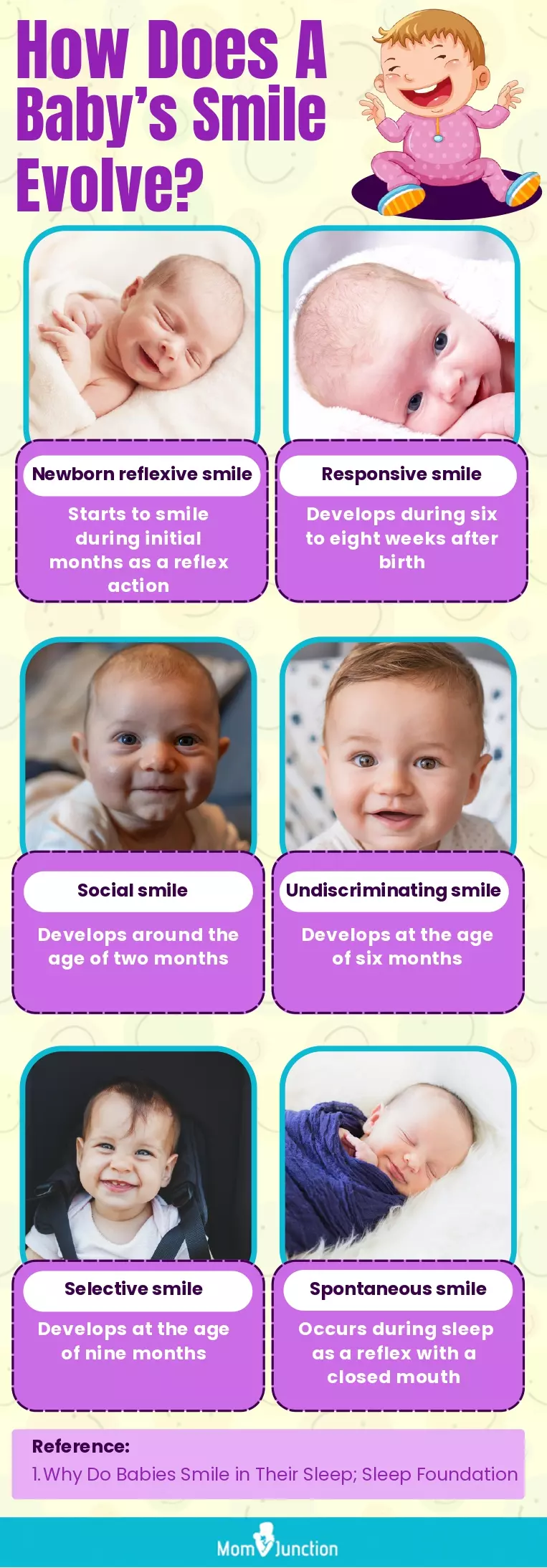
Illustration: Momjunction Design Team
Personal Experience: Sources
i. All Smiles In The Morning.
https://www.thesmallthingsblog.com/2014/03/all-smiles-in-morning/
References
- When will my baby smile? Pathways.org
https://pathways.org/when-will-my-baby-smile/
Feeling down and need a little pick-me-up? This video has the cutest smiling babies that will brighten your day.
Community Experiences
Join the conversation and become a part of our nurturing community! Share your stories, experiences, and insights to connect with fellow parents.
Read full bio of Dr. Umera Zakiahmed Saiyed
Read full bio of Manjiri Kochrekar
Read full bio of Rohit Garoo












